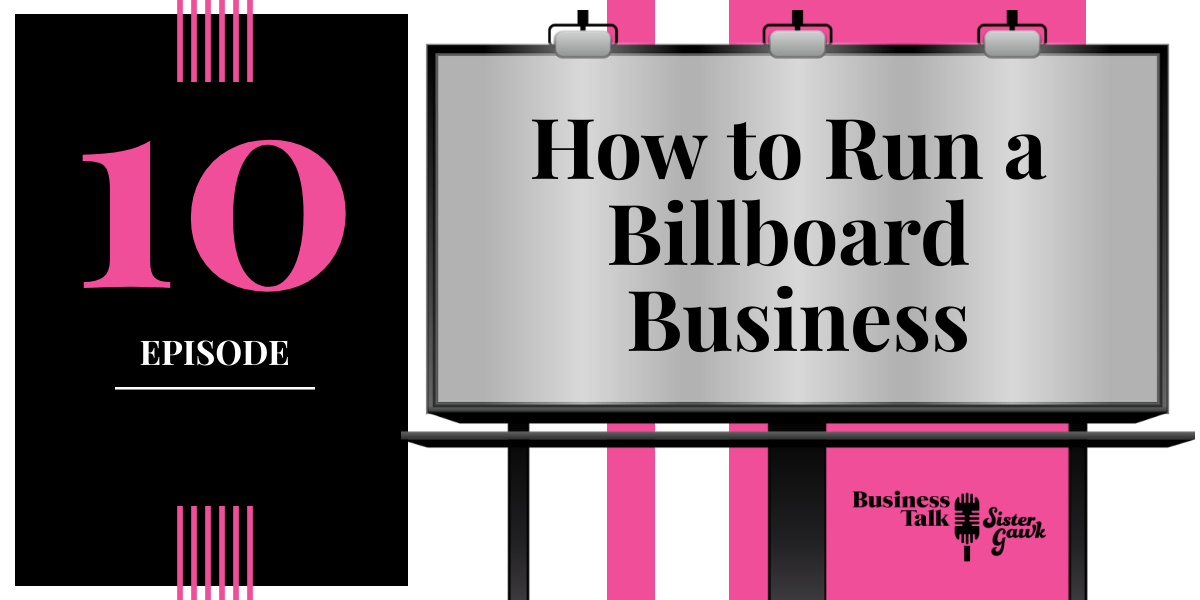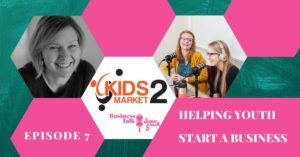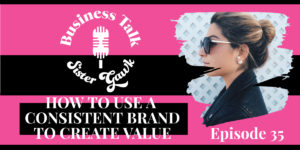Have you ever wondered how people own billboards and put them up? This episode is for you! Thanks to Tim VanSoast for letting us interview him for two episodes, we’re going to be covering what it’s like to run a billboard business, what it looks like to prove their value, and what it even looks like to hang them up. Stick around for the end to hear about the prank Tim pulled using his business. 😉
In this week’s episode, we meet again with Tim VanSoest to talk about another piece of his business portfolio – Billboards! Everything from permits to increasing profitability as we dig into the world of highway marketing.
Bekkah: With us today Tim VanSoest. We’re going to be talking about billboards! Thanks so much for being with us today, Tim!
Tim: Yeah! I think I’m your first guest that’s been on more than once.
Bekkah: That’s true because you’ve done so many things so we gotta keep asking you stuff.
Ruthie: Tell us a little bit about billboards. What do you do with that?
What is Billboard Marketing?
Tim: Yeah just to be clear billboards are those things on the highway that you see and, hopefully, look at when you drive by that are advertising things. They’re just big, big signs that are along the side of the road. Sometimes they have lights at night. Other times they don’t, but yeah! I have a few of these and the reason I have them is because they came with the business we talked about last time. It was kind of a package deal. I’ve never intended to own highway billboards.
Bekkah: You didn’t wake up one day and say, “I think I want to own billboards!”?
Tim: Exactly! It’s kind of odd because most of the billboards that you see around are owned by a couple of really big media companies. There’s a handful out there who are owned by smaller guys like me that just had commercial property alongside a major highway and decided to do it on their own. Most of them that you see are owned by those big media companies. They might lease the land from individual property owners but those big media companies handle all the printing of the signs and sales and all that kind of stuff. I’m a little unique in that I do all those things in-house. I do my own sales for the billboards in terms of recruiting businesses that want to advertise on them. I also design the images in many cases that are placed. Then I get them printed and I install them. I install the actual sign that goes up.
Bekkah: You probably have some great workman’s comp insurance for that, huh?
Tim: Well, as an individual business owner, I’m not required to have worker’s comp, so I do it at my own risk.
How To Create Your Design
Ruthie: You don’t print the billboard signs in-house? You don’t have like a giant jumbo screen printing thing that you spend hours and hours making your perfect design on?
Tim: I don’t! I’ve found easier ways to get that done but I do spend a lot of time doing the design work. The reason I’ve gotten into that is, I don’t have a whole lot of design background, but I’ve looked at a lot of billboards in my life as I’ve driven around the country. You kind of know what one should look like and there are really good elements that you can implement. This is just a general practice in all of business, one of the best ways to be successful is by looking at other people who are successful and doing what they do. That applies to design work, too. I know that there are people who are a gazillion times more gifted than me in design, but I know elements well enough that I can design a billboard for a smaller company that might not be willing or able to invest the expense of hiring a professional designer to do it. It just makes it an easier one-stop shop for them. I’m able to say, “Hey, I think your business would be great on this billboard and I’ll take care of all the details for you. You give me the idea that you have for what you want up there and I’m going to design you some elements that I think would work and I’ll get it printed for you. I’ll get it installed for you.” A really easy, one-stop-shop. Which is one of the things that the big media companies do for businesses. Basically, I’m just doing that on a really small scale.
Bekkah: Do you ever have people that come to you with really good ideas and you’re like, “No, don’t put that on a billboard.”
Tim: That hasn’t happened yet.
Ruthie: What about chicken nugget bracelets? Would you put that on a billboard?
Tim: You know, I think that would be a mistake to put that on a billboard, but if you want to sign and pay a year in advance, I’d be happy okay to get that up there for you.
Ruthie: Ok! Good to know!
How to Research Starting a Billboard Company
Bekkah: When people usually look at renting or owning billboards did you do a lot of research on it when you were going to do it, originally or did you just decide, “Oh, because I’m buying this other business, I’ll just figure it out as I go.” How did you learn about doing all of these things, because, obviously, I don’t think most people know how to screen print a giant billboard. How did you do that?
Tim: I didn’t do a lot of research. This was one of the opportunities I saw in creating additional revenue streams because now I’m getting paid to put the Billboard up. I’m commanding a higher rent off of them as a one-stop-shop. This was one of the opportunities I saw because, previously, in this business, the owner was saying, “Yep, I’ll rent you this space, but you have to find somebody designed it, somebody to print, it and then somebody to install it. Which usually meant a really high expense of hiring one of those big media companies to come and install the print up on the board. It added expense and it just wasn’t as easy for them to sell the boards. They have a higher vacancy rate or higher empty on their boards compared to what I’m experiencing because it’s easier to sell when you can answer all the problems for your customer, rather than just part of them. I went out and really tried to just learn how to do this. I have a little bit of experience in design, so that was helpful. That goes way back to when I was a kid, a teenager and I was working in my dad’s business. Back in the 1990s not a lot of folks, especially, my parents’ age were computer literate so I learned how to design brochures for their business. That early knowledge helped me now much, later on, to know at least the beginnings of how to do a design of a billboard in Photoshop. That’s what I do it in. There’s probably better applications but it’s what I use. Then yeah it’s just learning and watching. Hey! You’ve probably never noticed somebody putting up a billboard before but if you start watching eventually as you’re driving down the highway you’ll see one of these things being changed! Pull over and watch! That’s how we learn it’s just through real practical ways.
Ruthie: Cheap entertainment!
Bekkah: They are probably like, “Who’s this creepy guy taking a video of us?”
Ruthie: Did you have to figure out what adhesive to use? I’m just imagining you like trying to put up this giant poster and then a gust of wind comes and suddenly you’re a poster burrito and you’re glued to your advertisement.
Tim: Yeah! Right! Those are some of the things that I thought are early on, too, could happen. I’ve learned not
to do it on windy days, number one. But actually, in the ones that I have, there are no adhesives used. They’re actually like a giant tarp that you cover your woodpile with. It’s a vinyl material and they actually don’t get glued on. They’re actually strapped on to the board using ratchet straps. The companies that print these things sew a pocket that goes all the way around. This is probably more than anybody wants to know but they’ll appreciate the billboards when they see them in new ways. But there are pockets that go all the way around and you just put a metal pipe through all the four sides and you take ratchet straps like what you would use in the back of a pickup truck to tie things down. Those ratchet straps hold it on so there’s you know a dozen and a half of those ratchet straps going all the way around the vinyl and it kind of gets stretched into place.
Bekkah: I’m just imagining like every high school kid whose parents owned farmland on the highway being like, “I’m doing this. Done.”
Tim: Yeah if it was that simple! One of the most complicated things with highway billboards is getting the proper permits from the proper authorities. Usually, it’s going to be on a state or federal highway that’s managed by the state, so you have to have permits from like the Minnesota Department of Transportation to put those up. Those permits have to be paid and renewed annually, as well, so there is some legal red tape to put these things up. It’s not just as simple as building a wooden frame and stretching a piece of vinyl around it.
Bekkah: Although we do know a few different schizophrenics locally that have gone that route and it seems to be working for them.
Ruthie: They just throw up some signs promoting whatever propaganda they want.
Bekkah: “It’s the end of the world!”
Ruthie: There’s barbed wire all over it. Did you know that? The whole thing is covered in barbed wire so nobody can take it down. In case you were wondering. When you purchased this land and it came with these billboards, did you
catch the fever and then you decide to buy a whole bunch of them or do you have like others that you’ve purchased since then? Or just stick with the ones that you have on this property?
Tim: Nope. Just the ones I have on this property that’s what I have. I don’t foresee it expanding really beyond
that. It’s kind of a little niche business it’s not anything too exciting. I think if I were to scale it up, obviously, I’d be competing against some really large media companies and that probably wouldn’t be a really effective approach.
Traditional or Digital Billboards and Data Mining?
Ruthie: Have you looked into doing a digital one instead of just a traditional?
Tim: Yeah I have, with where I’m located the cost of digital is still really prohibitive for what I am able to gain
or what I’m able to charge for rent for them. Really your rents are based on traffic count. That’s why you see digital really prevalent down in the Minneapolis area because there’s just a ton of people on the highways. You can access all that data by the way on MnDOT’s website. It’s kind of interesting that they keep all these traffic counts! There are those little rubber cords on the highway that you’ll see every now and then. They count every time a car drives over them. MnDOT puts those out all over the place because they monitor traffic count. For their own purposes then we’re able to look at that data and say, “Hey, eight thousand cars drive by this spot a day. The billboard’s going to be seen by those 8,000 people, in theory, so it commands this price.” Obviously, one that’s going to be seen by 30,000 people in a day is going to command a higher price and that’s where digital is being used because it justifies that high, high investment cost of such a large upfront investment in the digital board.
Ruthie: Have you ever found one of those strips and then just taken your car and driven over it and then reverse, then driven over it in reverse?
Tim: Well, that temptation has never crossed my mind.
Bekkah: Most people don’t have that temptation on a very highly trafficked highway.
Tim: No, but now that we’ve put that out there I think it’s probably good to watch for people who might be doing
that on the highway.
Bekkah: Up their billboard prices.
Tim: To talk a little bit more about that data that’s actually really interesting data. I’m sure it could be used in ways that are beyond billboards, but it’s great that the government gives us that insight. That they share that data with us because for me it’s been helpful when I go and try to sell a billboard to a potential client. Being able to say, “Well, there are 8,000 cars that drive by here each day. If you gained just half of a percent of those people,” to help walk them through the investment that they’re making has been really helpful.
Bekkah: Do you have like a process that you go through to allow people to be on your billboard? Do you say, “Okay yep this is how we’re gonna do this and this is like what we allow to be posted here.” Or do you not have that? And the second question we have what is the first thing you ever put up on your billboard?
Tim: The first question is there rules around what can be put, yes. Our contract does stipulate that. Really what my contract stipulates is an extension of what the state of Minnesota stipulates in my permitting process, but there are things that are restricted on highway billboards, like offensive material. We do have those stipulations for what can be put up. In terms of what the first thing I ever put up – it was for a credit union.
Ruthie: Oo Fancy.
Bekkah: So exciting! What would you recommend to someone starting out or looking to do this? Things to avoid or things to consider?
Tips to Remember When Advertising
Tim: I think it’s really beneficial to customers to have a one-stop-shop where they’re not forced to source the printing and the installation themselves. I see a lot of value in doing all those things in-house and having the ability to do those. Or if you don’t have the ability to do those yourself like I’m doing, have those things taken care of for the customer so it’s rather seamless for their experience. I just think it provides a better overall ability to sell the billboards and then to keep your customers around because they see you as more than just a pile of sticks out in the ditch that is holding a sign up for them. Also being able to educate them on and the value that you’re providing.
Bekkah: Okay. Are there any free tools or resources that you would recommend people looking at?
Tim: That’s a little harder on this one. That’s a tough one. I’m sure MnDOT would be happy to talk to you about the permitting procedure and stuff but this is a more difficult to enter business. From that permitting standpoint and you have to have commercial real estate alongside a major highway. Those are both barriers. MnDOT doesn’t let these things go up just anywhere so it takes a bit of legal work to actually get them placed. As far as free resources, I can’t think of any, unfortunately.
Ruthie: So you can’t have them in residential areas at all?
Tim: No, that’s not always true because you see them in weird places, occasionally, but those seem to be mostly older and grandfathered in. It seems like most of the newer boards that are placed are always on commercial property. And that’s what it takes, a lot of that homework. That’s really why you see I think the big media companies really dominating this market because they have the resources and they know the process. It’s a lot easier for them to put up a new installation than it would be for somebody who’s never done it before. They’ve done the learning curve, they have the people in-house. That’s why I think it seems more and more they’re owned by the few big media companies.




